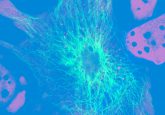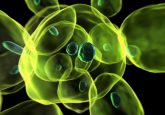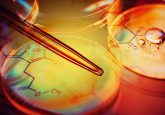3. How can you demonstrate biosimilarity, what are some of the techniques used?

Mario DiPaola: “When developing a biosimilar, the physical, chemical and biological properties of the reference product must be carefully evaluated, understood and compared to those of the biosimilar product.The analytical techniques available to characterize the physiochemical and biological properties of protein based products are numerous and include:
*SDS-PAGE, CE-SDS, SEC and MS for size determination
*IEF, cIEF, iCE and IEC for charge characterization
*Bottom-up and top-down mass spectrometry for amino acid sequence analysis and PTM characterization (type of glycosylation, site of glycosylation, oxidation, deamidation)
*N- and O-linked glycan analysis
*Amino acid analysis for composition, extinction coefficient to determine product strength
*Cell-based assays, ELISA, ligand binding (RIA, SPR), in vivo assays for determination of biological activity and mode of action
*Intrinsic and extrinsic fluorescence, H/DX–MS and DSC for folding
*Far and near-UV CD, FTIR and NMR for secondary structural analysis
*2D-NMR, X-ray crystallography, H/DX–MS for tertiary and overall 3D structure”
Fernando de Mora: “The key studies to demonstrate biosimilarity(i.e. to demonstrate that two biologics share essentially the same active substance and have overlapping therapeutic efficacy and safety) are laboratory studies aimed at showing very high structural and functional equivalence. Therefore, the best way to pick up likely minor molecular differences are physicochemical comparability studies, such as glycopattern, High Order Structure, disulphide bonds, etc., and the in vitro and in vivo studies where biological activity is compared with highly sensitive techniques.”
Jonathan St-Germain: “Concluding on the similarity between a generic biological therapeutic and an innovator requires characterization. Characterization requires measurements on the nature and structure of the molecule. It is the accuracy and precision of these measurements that allows the comparison between complex molecules. Biosimilarity must be clearly defined and set within clear criteria but proper application of these criteria is directly dependent on the extent and resolution of empirical, analytical data. These data can be generated using various techniques such as NMR, x-ray crystallography, mass spectrometry or ligand-binding assays, to name a few.”
Paul Declerck: “Biosimilarity at the quality level can be demonstrated by a wide variety of analytical techniques, including many variants of each technique, such as:
*Size-exclusion chromatography
*Liquid chromatography, including high-resolution HILIC UPLC and reversed-phase HPLC
*Electrophoresis and capillary zone electrophoresis
*Mass spectrometry
*LC–MS, CE–MS, hydrogen-deuterium exchange/mass spectrometry and electrospray ionisation mass spectrometry
*Circular dichroism
*X-ray crystallography
*Nuclear magnetic resonance
*Fourier transformed infrared spectroscopy
*Differential scanning calorimetry and isothermal calorimetry
*Surface plasmon resonance
*Receptor binding assays
*Cell-based methods to determine ADCC, CDC, complement activation”
Arno Kromminga: “Besides physicochemical analyses, comparative PK/PD studies and comparative clinical immunogenicity testing are needed.”





